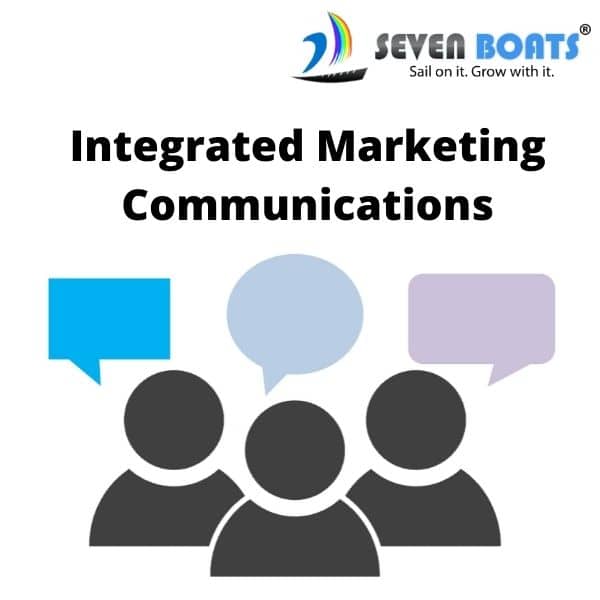
Get the comprehensive guide to integrated marketing communications (IMC) – integrated marketing communications definition, strategies, examples & more. Marketing communication techniques
The practice of professional marketing has become extremely complex, not only due to technological advances, digital media, and the necessity to communicate with global prospects but also due to “communication” is a complex term that means different things to different people.
Besides, a large number of crossovers among the diverse facets of marketing often leads a confusion about the roles and responsibilities of marketing communicators. Therefore, it’s very challenging for marketers, customers, and prospects to glean a clear concept of communication roles and the functionalities involved.
The idea of Integrated marketing communication, also known as IMC, was first introduced by Schultz and Schultz in the 1980s and since has changed the way marketers communicate and interact in business.
Before we get started with the process of Integrated marketing communication, it’s important to know what actually it is.
What is an integrated marketing communication?
The definition of Integrated Marketing Communications:
Integrated Marketing Communication or IMC is an idea under which a business diligently integrates its all communication and distribution channels to deliver relevant and consistent messages to its audiences. The aim of an IMC campaign is to ensure the relevancy and consistency of the brand messages over time using contemporary communication channels.
According to American Marketing Association, Integrated Marketing Communication is defined as –
“a planning process designed to ensure that all brand contacts received by a customer or prospect for a product, service, or organization are relevant to that person and consistent over time.”
The integrated marketing communication process is typically an integration of all marketing resources including men, approaches, and tools within a business which helps to maximize customer experience as well as profit at minimum cost. IMC involves diverse innovative and effective ways to ensure that the audience gets the right message on time.
What are the advantages of integrated marketing communications?
Though integrated marketing communication needs a lot of effects to manage efficiently, it offers numerous advantages and benefits.
The major advantages and benefits of integrated marketing communications include –
- It helps to create a competitive advantage, increase sales and revenues while saving a lot of time, money, and energy.
- Integrated marketing communication wraps communications around prospects and guides them to move via the different stages of the buying process. The business consolidates its brand image, develops a brand message, and nurtures relationships with prospects.
- The relationship bond between a business and customer created by IMC protects the business from the invasion of competition and helps retain the customer loyal for lifelong.
- In a busy world, crystal clear, consolidated, and consistent messages help cut through the noise of overwhelmed commercial messages of each and every day.
- Carefully linked brand or business messages help prospects reduce their choice difficulties by timely updates, offers, and reminders.
- Lastly, integrated marketing communication uses the same images of a business including photos and graphics, and eliminates the hassles of duplication of such things multiple times, saving a lot of money, workload, and stress as well as huge time.
What are the limitations of integrated marketing communications?
Despite its numerous advantages, IMC or integrated marketing communications has several limitations.
Most common limitations, but not limited to, include –
- Create functional silos. Organizational structures of a business often infested by managers who safeguard both their authorities and their budgets.
- Unfortunately, some departments intentionally isolate data and communications from each other. For instance, the department of PR sometimes doesn’t report to marketing. The salespeople rarely meet the department of advertising, promotion, and so on. Just imagine, what will happen when a salesperson doesn’t know about the new promotional offer.
- Rigid communication structures often develop internal power battles and resist any creative approaches within the organization.
These are a few of the most common limitations of integrated marketing communications. But these issues occur differently in different businesses, therefore, you will witness a lot more issues depending on the business type.
Components of integrated marketing communications
In IMC, all aspects of communication for promoting a product or service among the target audience work together to maximize cost-effectiveness and increase sales.
Various components of IMC include –
Foundation
The foundation involves a detailed understanding of the target audience, product or service, and competitor’s activities among other essential marketing aspects.
Brand focus
Brand refers to the corporate identity of a business. Brand focus represents the brand of the business.
Corporate culture
Every business has a vision. It’s essential for the employees to keep in mind the same before creating a product or service. The product or service should bear features in line with the company’s mission and vision.
Promotional tools
Businesses use several promotional tools such as personal selling, trade promotions, and so on to improve their relationship with existing customers as well as prospective customers.
Communication tools
To promote a particular product or service various communication tools are used by brands such as direct selling, advertising, social media promotions using Facebook, Linkedin, Twitter, Whatsapp, and so on.
Integration tools
A large number of integration tools are available in the market based on business types and work cultures that help track customer’s activities. However, a strong customer relationship management (CRM) software is essential to evaluate the effectiveness of different integration tools used.
Customer experience
Marketing communicators always emphasize customer experience. It’s the feeling of the customer about the product or service whether it has met the customer’s expectations or not.
How to create an Integrated Marketing Communications plan?
Integrated Marketing Communications Strategy:
According to IMC or integrated marketing communication, various communication aspects of promoting a business are put together for better results and maximum effectiveness.
An integrated marketing communication aims to increase the visibility of the business and create an impact on customers’ brains so that they remember the brand whenever they want to purchase similar category products or services.
The plan of an IMC involves several strategies that enable customers to see the brand simultaneously at various places.
For creating an effective integrated marketing communication plan, you should keep in mind both the availability of resources and the perfect time to promote the brand, product, or service.
The objective of the marketing should be clearly defined. Also, you will need to have a proper budget for allocating resources into your integrated marketing communication.
A glean of understanding of business, brand messages, features of the product or service, and most important buyer persona is essential for creating an integrated marketing communication plan.
The IMC plan must be aligned with the business goals, vision, and work culture of the business. The integrated marketing communication plan should be focused on what your company, product, or service is offering and how it would benefit its customers.
A successfully integrated marketing plan includes –
- A detailed summary of every step of marketing and communications on how to promote the brand, product, or service among prospective and existing customers.
- Vision, and corporate culture of the company.
- Essential components and features of the business, product, and service.
- A detailed description of buyer persona and their expectations along with competitive advantage.
- SWOT analysis of the integrated marketing communication plan along with necessary activities to avoid threats and weaknesses.
- The detailed specification of various required tools including communication tools, promotional tools, and integration tools.
An integrated marketing communication plan should be customizable and needs to be evaluated from time to time. It’s compulsory to measure the results and optimize the plan accordingly.
How to manage integrated marketing communications?
Different modes of communication need to be managed properly so that the same message reaches to target audience consistently over time. For instance, if your brand message says your products are natural and don’t contain any artificial substance, the banners, billboards, and digital channels should also distribute the same message. The integration should be done efficiently and smartly.
Here’re some steps to consider for managing integrated marketing communication effectively –
- The first step is to identify the target audience clearly. You will have a deep understanding of who are your customers, what are their expectations and needs, and how your product can benefit them and meet their expectations.
- The second step is to clearly understand the goal of communication. Your message will clearly define what you want your customers to do after receiving your message. This means, your customers will be guided about their next actions.
- Your contents should be properly designed and structured so that customers can scan the message easily and quickly.
- The next important thing is to select the right types of communication channels according to the target audience. Your customers should receive your business messages at the right place and at the right time.
- Create a reasonable budget for allocating necessary resources for promotion. An integrated marketing communication needs a wisely decided budget to handle several promotional activities.
- The last and most important step is to track results and optimize the plan accordingly. You will need to figure out what’s working and what’s not and then optimize your plan accordingly to promote your business more efficiently.
Integrated marketing communication monikers
Many monikers are used to indicate integrated marketing communication and sometimes create confusion among people. However, these monikers are relatively the same and often used interchangeably.
Some most common monikers include –
- Public relations
- Strategic communication
- Digital communications
- Organizational communications
- Media relations
- Public affairs
- Corporate communication
- Investor relations
While a few of these terms are used to indicate some areas of specialties under the umbrella of “communication”, most are used to refer to the process of educating, engaging, influencing, and persuading target customers about a specific business, product, or service.
Quick Notes on Integrated Marketing Communications (IMC)
Integrated Marketing Communications (IMC) is a strategic approach that involves coordinating and integrating various marketing communication channels to deliver a consistent and unified message to target audiences. Here are some key points about IMC:
- Definition: IMC is a holistic marketing approach that aims to align and coordinate all marketing communication activities, both online and offline, to create a unified and consistent brand message.
- Consistency and Coherence: IMC emphasizes the importance of maintaining consistency in messaging across different marketing channels such as advertising, public relations, direct marketing, social media, and more. This coherence helps build a cohesive brand image and strengthens brand awareness and recognition.
- Customer-centric Approach: IMC puts the customer at the center of its strategy. It focuses on understanding customer needs, preferences, and behaviors to create targeted and personalized communication that resonates with the target audience.
- Synergy and Integration: IMC recognizes the synergy that can be achieved by integrating different marketing communication channels. By leveraging each channel’s strengths and ensuring they work together harmoniously, IMC maximizes the impact of marketing efforts.
- Clear and Compelling Message: IMC emphasizes the importance of crafting a clear, concise, and compelling message that effectively communicates the brand’s value proposition and resonates with the target audience. This message should be consistently conveyed across all communication channels.
- Measurement and Evaluation: IMC advocates for measuring and evaluating the effectiveness of marketing communication efforts. This allows marketers to assess the impact of their campaigns, make data-driven decisions, and continuously optimize their strategies.
- Relationship Building: IMC recognizes the significance of building and nurturing relationships with customers. By delivering a seamless and consistent brand experience across various touchpoints, IMC helps foster long-term customer loyalty and advocacy.
- Adaptability and Agility: In today’s dynamic marketing landscape, IMC acknowledges the need for agility and adaptability. It encourages marketers to stay updated with emerging trends and technologies and to continuously evolve their communication strategies to meet changing customer expectations.
- Collaboration and Cross-functional Alignment: IMC requires collaboration among different departments within an organization, including marketing, sales, public relations, and customer service. This cross-functional alignment ensures a consistent brand message and enhances the overall customer experience.
- Continuous Improvement: IMC is an ongoing process that requires continuous monitoring, analysis, and improvement. By closely monitoring campaign performance, collecting feedback, and leveraging data-driven insights, marketers can refine their strategies and optimize their communication efforts.
Overall, Integrated Marketing Communications (IMC) is a strategic approach that aims to create a unified and consistent brand message across various communication channels. By aligning marketing efforts and focusing on the customer, IMC helps organizations build strong brand identities, enhance customer relationships, and achieve marketing objectives.
Final words
In the blooming age of digitization, integrated marketing communication is an essential and effective approach to create low-cost targeted communications to increase the visibility and influence of a particular business, product, or service.
Integrated marketing communicators are basically trained digital marketers who are competent in planning, creating, and implementing digital marketing campaigns. However, integrated marketing communication skills, sometimes known as digital marketing skills, are highly demanded among all industries.
Wanna learn integrated marketing communication skills? Consider joining our internationally recognized digital marketing course that will teach you all facets of integrated marketing communication in the most practical manner.
Any question? Contact [email protected].








Very knowledgable information
awesome thoughts and very vast information .thanks
Hi…Good Explanation…Thank You For This…
The components are so much useful . Very informative as well